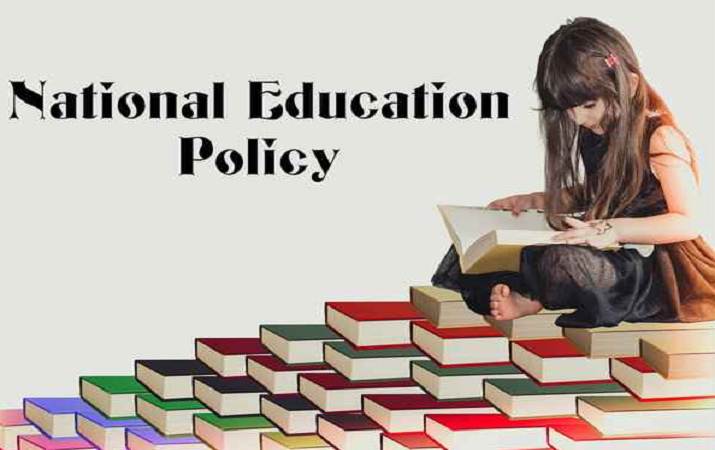Are you a school student? Fancy learning a classical language such as Prakrit, Tamil or Pali? That may soon be a reality.
Also, students who have flunked their boards may now get another go at the dreaded exams.
And for those in college, how about studying a bit of history even as you pursue a degree in math?
All this, and more, could soon become a reality if the National Education Policy (NEP), which will be released in March 2020, gets the Parliament nod.
The aim of the ministry of human resource development (MHRD) is to improve the quality and access to education in India.
Through a mix of regulatory changes and developmental initiatives, MHRD will institutionalise a new set of educational standards.
“We have received all the necessary feedback from the stakeholders. The policy is expected to give a boost to the way subjects are taught in secondary and higher education,” said an official.
A holistic development of students is what the MHRD’s aim is. The idea is that more the number of courses available in several languages, the better it is. However, nothing is expected to be mandatory and students will be given an option to choose whichever language they are interested in.
Ranging from curriculum to board examinations, here is how the new education policy could look like.
Boost to classical languages
The first move will be to give a boost to classical languages. Here, languages like Odia, Telugu, Tamil, Pali, and Malayalam apart from Sanskrit will be introduced in schools. This is likely to be from Classes 6 to 8.
The idea is to not have these languages as a mandatory subject but instead to have a ‘fun’ approach to the languages. The phonetics behind the languages, the origin as well its history would be taught. Further, relevant literature from these languages will also be converted to the medium of instruction and be made part of the curriculum across subjects.
A special emphasis will be put on the study of Sanskrit. It is likely that facilities for the study of Sanskrit, its scientific nature, and including samplings of diverse ancient and medieval writings in Sanskrit from a diverse set of authors will be made widely available in schools and higher educational institutions. It will also be offered as an optional language across all educational institutions.
Emphasis on arts
In addition to a variety of languages, MHRD is also expected to give a push around classical arts. This would include playing an instrument, singing, sculpting, drawing, painting, or a vocational craft. The idea is to use technology to bring students closer to the art. Also, local artists and crafts-persons will be recruited and utilised in schools for both short-term and full-time courses.
Read also: A Brief View of Food Technology
Restructuring of board examinations
NEP is likely to make a series of changes in the way board examinations are conducted in India. Here, a new range of elective subjects according to the student’s choice would be offered. It is likely that a higher emphasis will be placed on core concepts and skills.
The biggest change could be a change in the way the examination is conducted. It is likely that students may get two to three chances every year to give the examination to reduce the stress of failure. Further, schools could be advised to have more regular semester examinations rather than one board examination where a lot of ‘high stakes’ are involved.
Single regulator
The MHRD is looking to merge University Grants Commission (UGC) and All India Council for Technical Education (AICTE). There will be a single regulatory body, and the existing multiple regulatory bodies will evolve into playing new roles.
The National Higher Education Regulatory Authority (NHERA) will be set up as the single regulatory body for the entire higher education sector.
Post this, the university grants commission and existing regulatory bodies will be transformed into the Higher Education Grants Council (HEGC) and Professional Standard Setting Bodies (PSSBs), respectively.
To complement these bodies, the General Education Council (GEC) will be constituted as an academic leadership institution.
RTE ACT changes
The Right to Education Act (RTE) calls for free and compulsory education for the 6-14 years age-group. All schools are required to provide a certain percent of seats to deserving students under the Act.
It is likely that the RTE Act will be reviewed comprehensively to enable the policy. Availability of free and compulsory quality pre-primary education will be included as an integral part of the RTE Act.
Over and above thus, availability of free and compulsory quality education for Grades 9-12 will also be made an integral part of the RTE Act in 2020. Hence, the scope of the RTE Act will now be upto the age of 18 years.
Choice of choosing subjects
At present, the system of education in India is compartmentalised. This means that a student studying Arts cannot take up Mathematics as a subject while one studying engineering cannot have History as a subject. It is likely that NEP will allow students to choose a series of elective subjects that are different than the programme of study.
Through a gamut of changes, MHRD wants NEP to enable India to become a top destination of education not just for Indians but also for international students.
Courtesy: Money Control
Download uLektz Apps for Latest Educational News / Events / Scholarships
Follow us: #facebook #twitter #linkedin also enroll our skill course








